| Rye %: | 53% |
| Stages: | Sponge, Final dough |
| Leaven: | Rye sour culture, Yeast |
| Start to Finish: | 15-17 hours |
| Hands-on Time: | 30 minutes |
| Yield: | Two 1 lb. (475 g) loaves |
Ever since I acquired my copy of Der Duft von Frischem Brot (The Aroma of Fresh-baked Bread), I’ve been hooked on Austrian ryes, which, like so many Alpine ryes I’ve encountered, have wonderfully complex and interesting flavor profiles. This caraway rye is no exception. It’s a creation of third-generation baker Johannes Breuss, of Oberdorf, a town nestled in the high Alps of Vorarlberg, Austria’s westernmost region, where it’s bordered by Bavaria, Switzerland and Liechtenstein.
With the exception of the mild nuttiness of the light rye flour and the moist tenderness of its open crumb, there’s nothing subtle about this bread: the caraway seeds, both ground and whole, provide a solid blast of pungent astringency, followed by an intense, well-balanced sour – the result of a 10-12 hour sponge and 3-hour bulk ferment. Proofing seam-side down and then flipping it seam-side up to bake produces an appealing rustic look and the 45-50 minute bake time results in the thick, chewy crust that European rye lovers favor.
I like intense flavors, and this “Closing Time” Dark Caraway Rye will stand up to anything, including robust soups and stews, intensely flavored washed-rind and veined cheeses, and heavily cured and smoked meat and fish.
Sponge (Day 1, Evening):
| Ingredient | Grams | Ounces | Baker’s Percentage |
| Medium rye flour | 145 | 5.10 | 100% |
| Warm (105°F/41°C) water | 145 | 5.10 | 100% |
| Rye sour | 15 | 0.55 | 10% |
Combine the sponge ingredients, cover and ferment at room temperature (70°F/21°C) overnight, 10-12 hours. The sponge will have tripled in volume and begun to fall back on itself and the surface will show broken bubbles.
Final Dough (Day 2, Morning):
| Ingredient | Grams | Ounces | ||
| Sponge | 305 | 10.75 | ||
| Instant yeast | 2 | 0.05 | ||
| Warm (105°F/41°C) water | 300 | 10.60 | ||
| Bread flour | 300 | 10.60 | ||
| White rye flour | 200 | 7.05 | ||
| Salt | 20 | 0.70 | ||
| Caraway seed, ground | 6 | 0.20 | ||
| Caraway seed, whole | 6 | 0.20 | ||
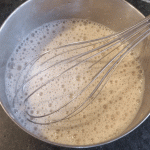 Combine the flours in the mixer bowl and dissolve the sponge and yeast in the water.
Combine the flours in the mixer bowl and dissolve the sponge and yeast in the water.
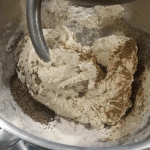 Use the dough hook to mix at low (KA2) speed for 3-4 minutes and add the caraway seed and salt.
Use the dough hook to mix at low (KA2) speed for 3-4 minutes and add the caraway seed and salt.
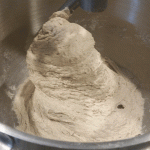 Continue mixing until the dough is well blended and starts traveling up the dough hook, 5-6 minutes.
Continue mixing until the dough is well blended and starts traveling up the dough hook, 5-6 minutes.
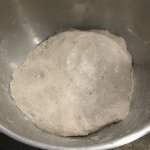 Use wet hands to pat the dough down.
Use wet hands to pat the dough down.
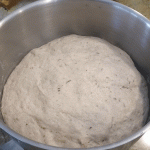 Cover and bulk ferment at room temperature until the dough has tripled in volume, about 3 hours.
Cover and bulk ferment at room temperature until the dough has tripled in volume, about 3 hours.
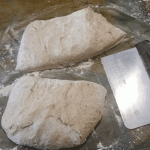 Turn the dough onto a well-floured work surface, knead it back to its original volume and divide into two pieces, each weighing about 1¼ lb./575 g.
Turn the dough onto a well-floured work surface, knead it back to its original volume and divide into two pieces, each weighing about 1¼ lb./575 g.
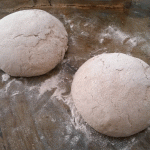 Flour well, cover, and proof at room temperature, seam side down, until the floured surface shows cracks, about 45 minutes.
Flour well, cover, and proof at room temperature, seam side down, until the floured surface shows cracks, about 45 minutes.
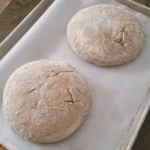 Flip the loaves onto a parchment-lined sheet pan so that they’re seam side up.
Flip the loaves onto a parchment-lined sheet pan so that they’re seam side up.
Preheat the oven to 450°F/230°C with the baking surface in the upper third. Bake until the loaves thump when tapped with a finger and the internal temperature is at least 198°F/92°C, 45-50 minutes. Transfer to a rack and cool thoroughly before slicing.
Baker’s Percentages:
| Ingredient | g | % |
| TOTAL FLOUR | 645 | 100.00% |
|
Bread flour |
300 | 46.51% |
|
White rye flour |
200 | 31.01% |
|
Medium rye flour |
145 | 22.48% |
| Water | 445 | 68.99% |
| Salt | 20 | 3.10% |
| Instant yeast | 2 | 0.31% |
| Rye sour culture | 15 | 2.33% |
| Caraway | 12 | 1.86% |
| TOTAL FORMULA | 1,139 | 176.59% |
| Flour prefermented | 145 | 22.48% |

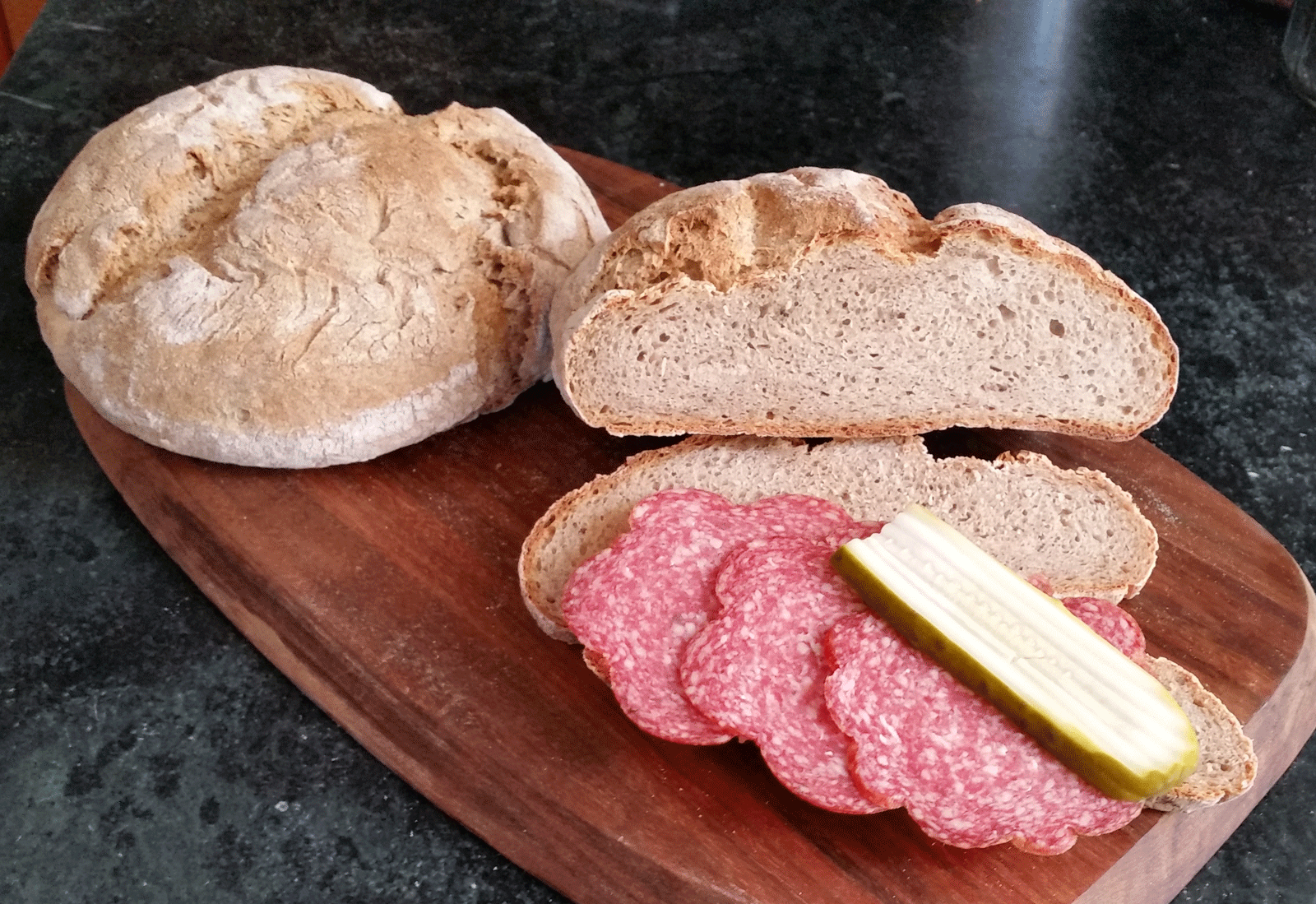
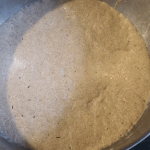
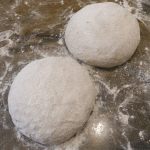
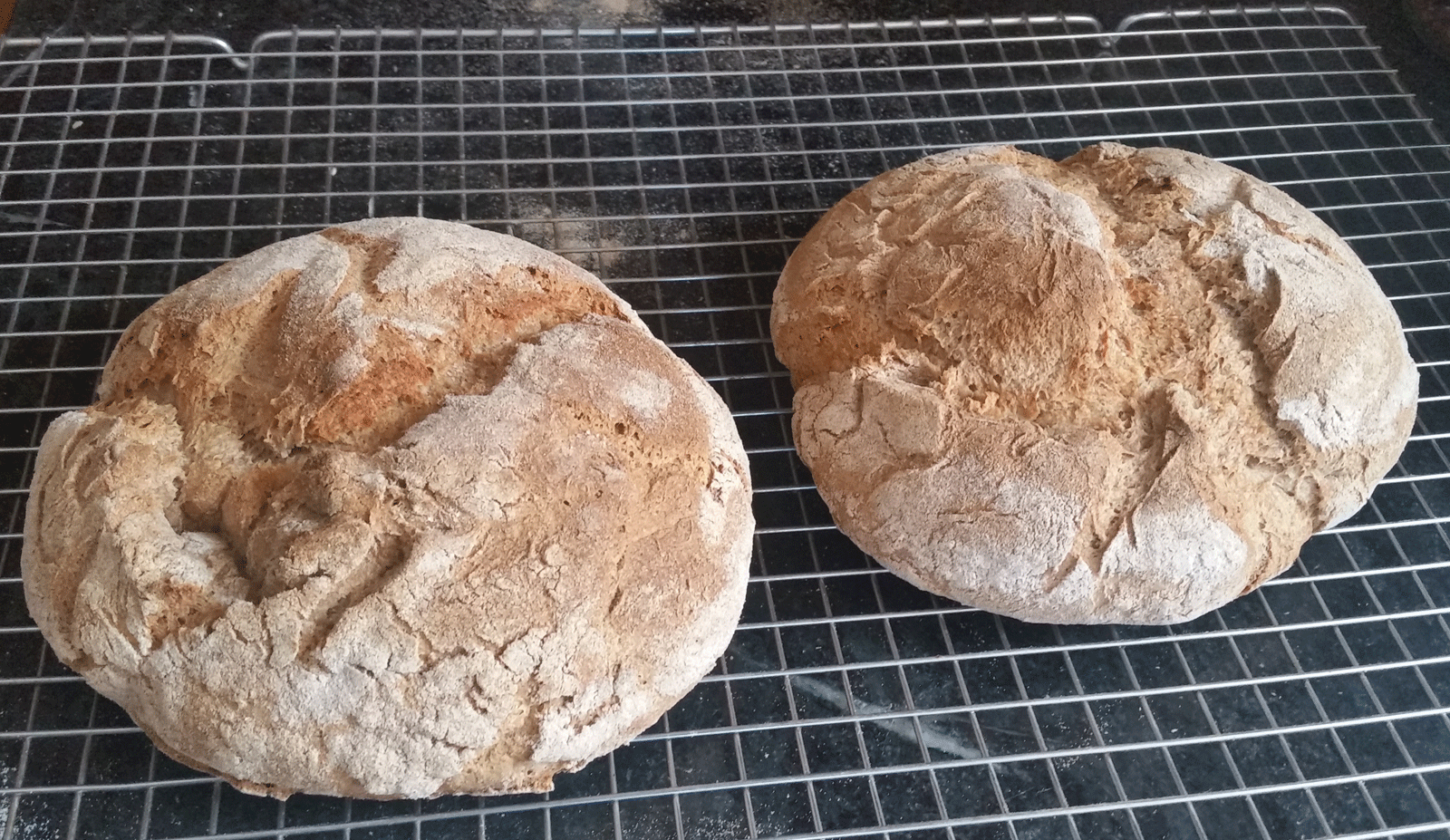
Henrik
September 25, 2016I bought Barbara van Melle’s book as soon as I read about it on one of your posts and been baking this bread a few times now using lightly sifted rye (the only non-wholemeal rye we can get), no yeast and a hydration of 82%. It’s wonderful, but my first effort using the 69% hydration in the original formula was a dense ball. I’ve now noticed this phenomenon with several of your recipes as well. As soon as I up the hydration, the bread comes out looking very similar to your posts. Why is this? Just the flour or something else? We’re at about 700 m asl with current temps around 12-15C.
Stan Ginsberg
September 26, 2016First, wholegrain flours, especially rye, are very absorbent, so the rye that you get may well be both thirstier than the rye flours I use, and, if they’re freshly milled, will be even more water absorbent. Clearly, your flour needs more hydration than mine, so I’d suggest increasing the recipe amounts by 10-15% as a general practice.
Jack Cohen
September 26, 2016Mazel Tov on the release of your new book!! Best wishes for a successful road show!!
J&J Cohen
Stanley Ginsberg
September 26, 2016Thank you both!
Dabrownman
September 27, 2016Good luk with that long awaited rye bread book! This is a fine rye bread with the Forkish baked seam side up!
Well done and happy baking Stan
Karin Anderson
September 30, 2016I chime in with the others – congratulations to your book release, Stan! I’m looking forward to the copy I ordered.
Also, I really like the lay-out of your post – very clean and pleasing to the eye.
I’m flying to Germany, soon, would you like me to get something for you again?